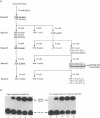Abstract
We have used in vitro selection techniques to characterize DNA sequences that are ligated efficiently by T4 DNA ligase. We find that the ensemble of selected sequences ligates about 50 times as efficiently as the random mixture of sequences used as the input for selection. Surprisingly many of the selected sequences failed to produce a match at or close to the ligation junction. None of the 20 selected oligomers that we sequenced produced a match two bases upstream from the ligation junction.
Full text
PDF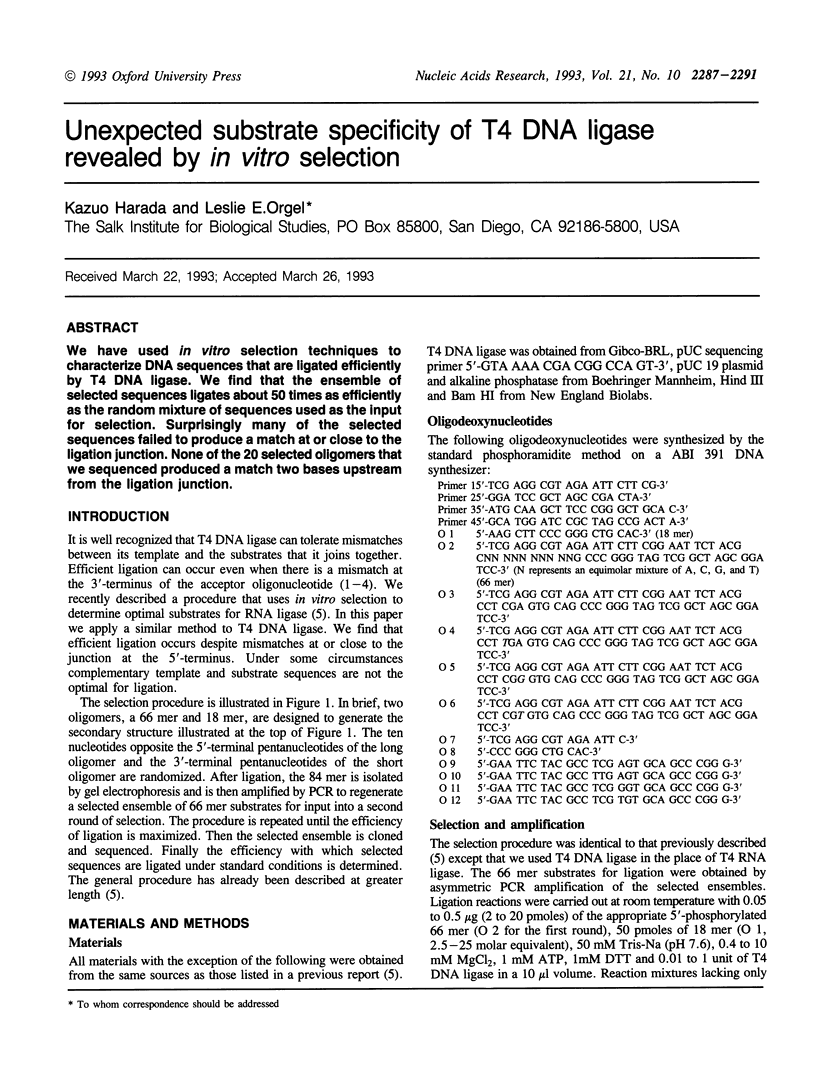
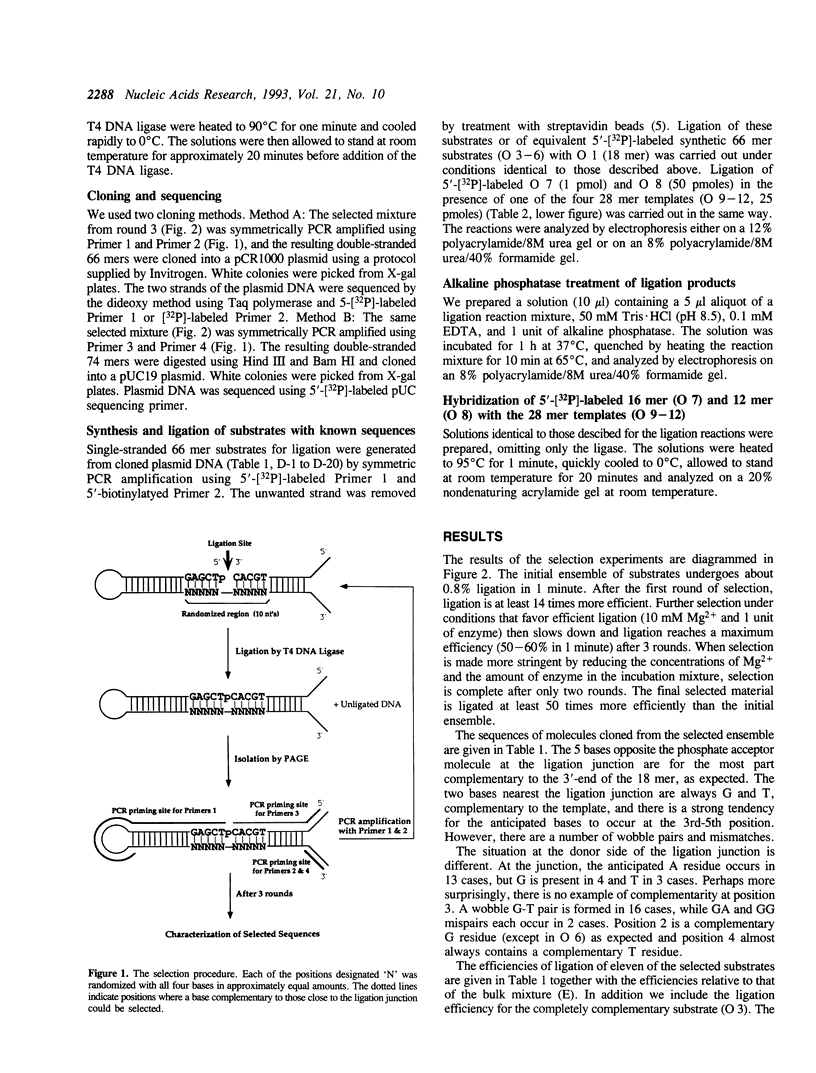
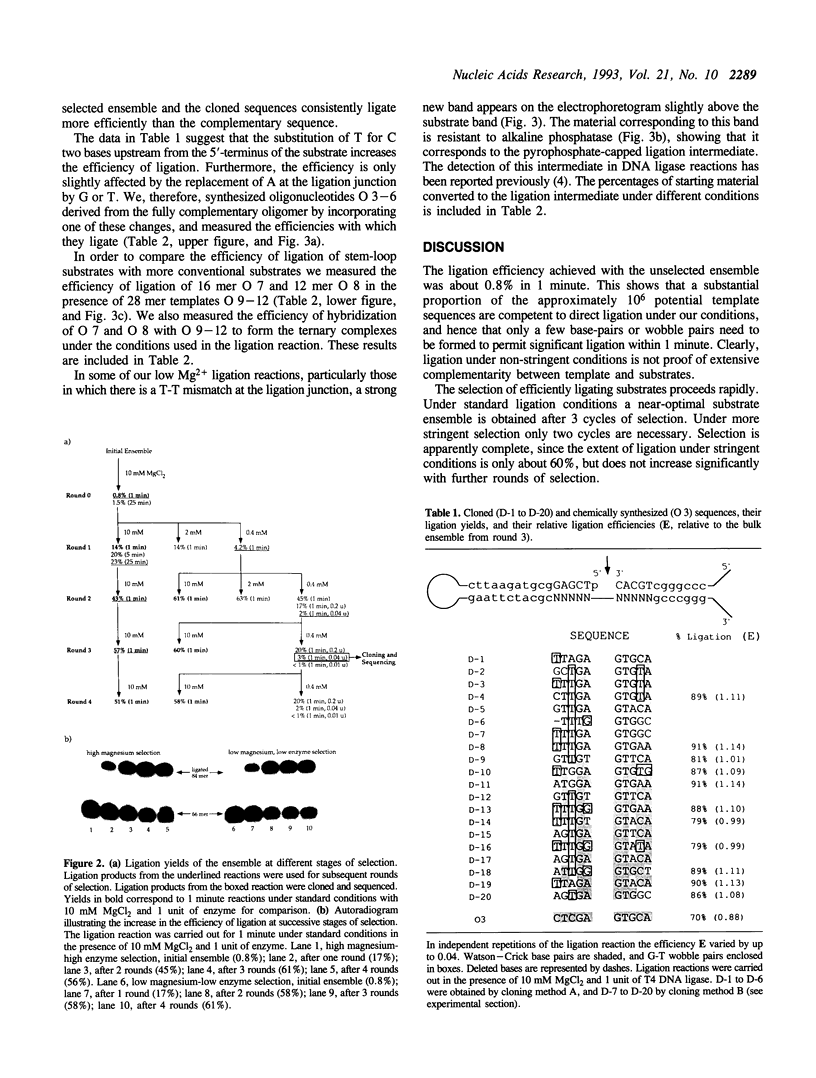
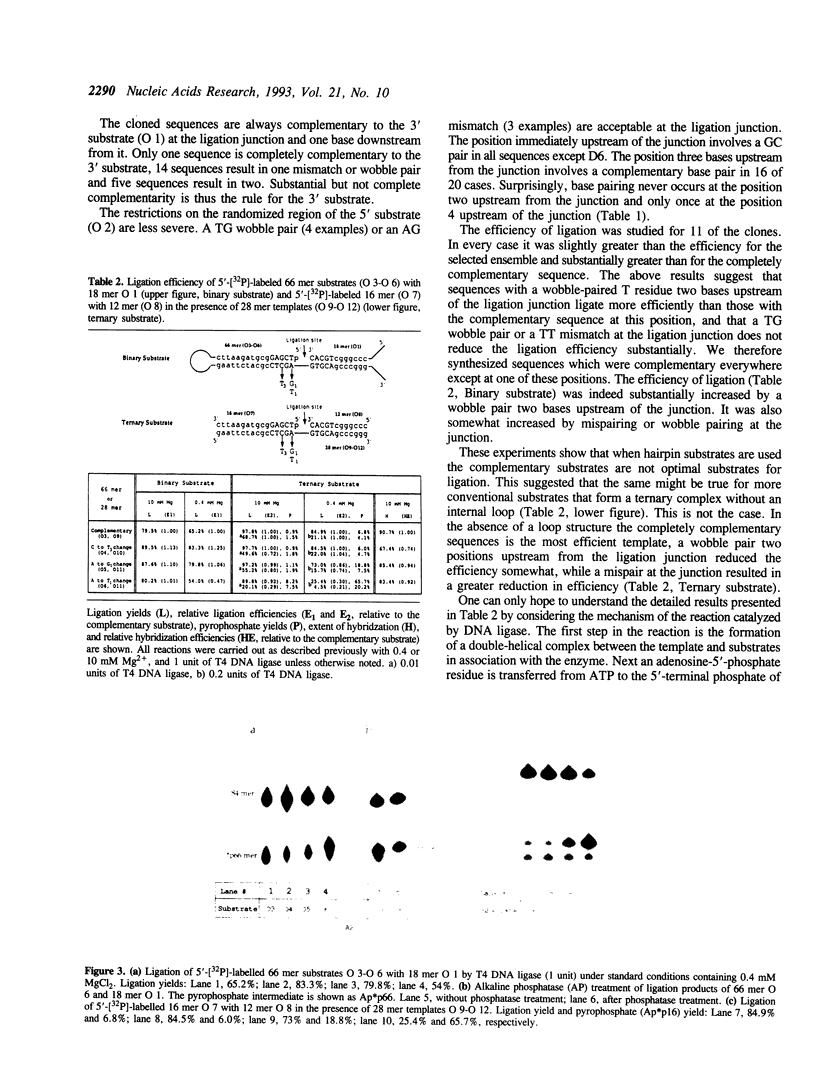
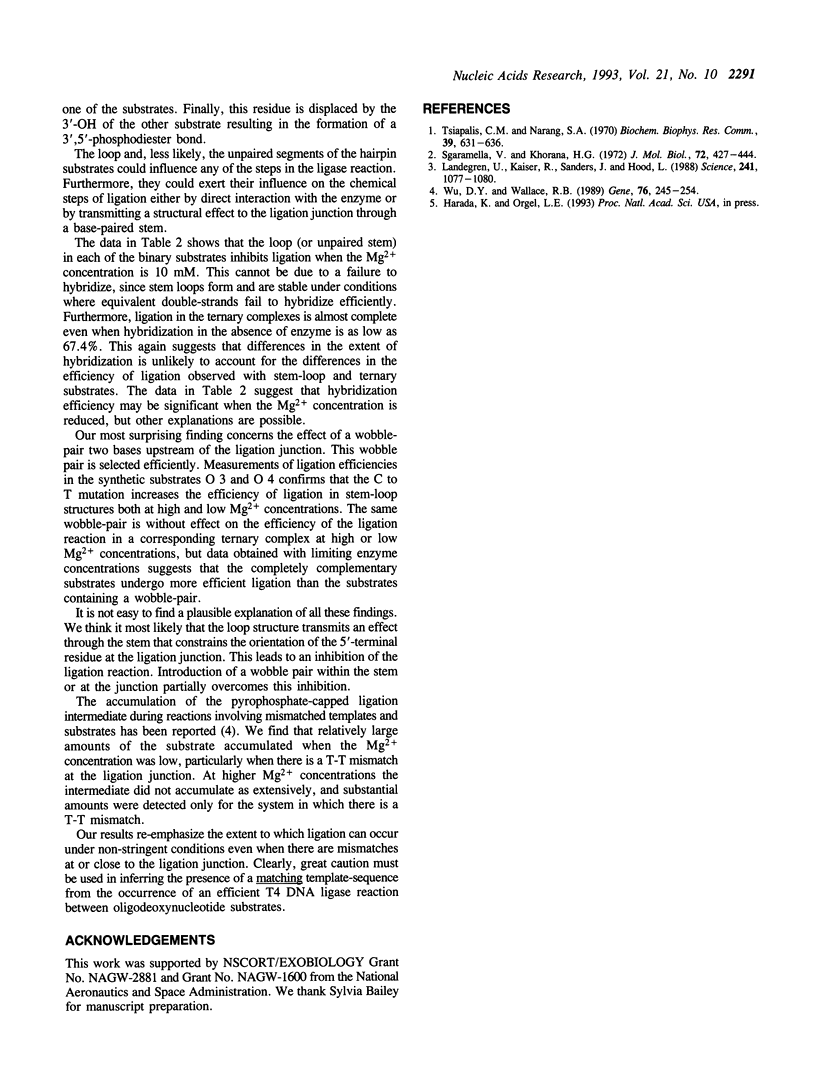
Images in this article
Selected References
These references are in PubMed. This may not be the complete list of references from this article.
- Landegren U., Kaiser R., Sanders J., Hood L. A ligase-mediated gene detection technique. Science. 1988 Aug 26;241(4869):1077–1080. doi: 10.1126/science.3413476. [DOI] [PubMed] [Google Scholar]
- Sgaramella V., Khorana H. G. CXII. Total synthesis of the structural gene for an alanine transfer RNA from yeast. Enzymic joining of the chemically synthesized polydeoxynucleotides to form the DNA duplex representing nucleotide sequence 1 to 20. J Mol Biol. 1972 Dec 28;72(2):427–444. doi: 10.1016/0022-2836(72)90155-6. [DOI] [PubMed] [Google Scholar]
- Tsiapalis C. M., Narang S. A. On the fidelity of phage T4-induced polynucleotide ligase in the joining of chemically synthesized deoxyribooligonucleotides. Biochem Biophys Res Commun. 1970 May 22;39(4):631–636. doi: 10.1016/0006-291x(70)90251-2. [DOI] [PubMed] [Google Scholar]
- Wu D. Y., Wallace R. B. Specificity of the nick-closing activity of bacteriophage T4 DNA ligase. Gene. 1989;76(2):245–254. doi: 10.1016/0378-1119(89)90165-0. [DOI] [PubMed] [Google Scholar]



